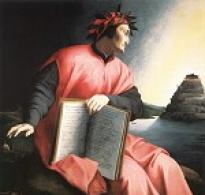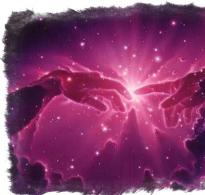Elf school in Reykjavik: Icelandic Hogravarts with trolls and fairies. How Elves and Trolls Saved Iceland's Economy Elves in Modern Iceland
Iceland is probably the only country where elves sincerely and almost all the inhabitants believe. There is even a law protecting the "hidden people". According to this law, each person, before building a house, is obliged to check whether the chosen place is occupied by elves.
There is a belief that the elves are controlled by the elf queen, the most beautiful creature on earth, but the queen is insidious, she lures men and turns them into elves. So if suddenly someone disappears in Iceland, or rather a man, then it is possible that he was turned into an elf.

The Icelanders believe that they live in stones and therefore wooden planks in the form of a facade of a house with a door are very often substituted for stones and it is believed that this is a door to house of the elves.

Elves in Iceland are very similar to people, they also live in villages and cities, raise cattle and are engaged in crafts. Only the Icelandic elves are very tiny creatures and are not visible to ordinary people, only people endowed with special abilities can see them.

They are called people of strength or Icelandic saikiki. Such people can hear not only elves, but also goblins and trolls and the voices of dead ancestors. In general, Iceland is an amazing country, a country of volcanoes and Icelandic saikiks are considered one of the strongest mediums in the world.

People believe that elves can help in difficult times, but only if they are treated with respect and do not bother with their attention. Therefore, the Icelanders try not to touch large stones unnecessarily in the territory of their garden, or anywhere else.

Sometimes even very large construction companies change their projects because of large stones and elves.
On Christmas Eve in Iceland, it is customary to light all the lights in the house and, after setting the table, go around the house three times, uttering a magic spell to invite the elves, including a request for protection from harm.

Seaport hafnarfjordur located ten kilometers from the capital on the fields of hardened volcanic lava and is considered the capital of the elves. Here they conduct tours of the nearby hills and rocks that serve as homes for the mysterious people. The locals joke that the city's population is much larger than the official figures, which do not include the elves living in the nearby rocks.

Elves are very fond of dancing, this is evidenced by the dark grass trampled in a circle.
On the river, people often hear bursts of oars and sometimes even sounds of incomprehensible speech. All this is evidence of the existence somewhere near the people of a fairy-tale people, elves. And rest assured, the Icelanders really believe in them.

Survivor of a serious car accident, member of the Icelandic Parliament from the Independent Party Ami Johnsen carried a boulder weighing thirty tons directly to his house, as he believed that the elves living in it saved him with the help of their charms.
And in the capital of Iceland, Reykjavik, there is even a school for the study of elves.
Most people in Iceland believe in elves. "Defenders of the elves" even joined forces with local environmentalists to urge the authorities of the land of ice to abandon the highway construction project so as not to interfere with fabulous creatures.
ON THIS TOPIC
A study conducted by the University of Iceland showed that 620 out of 1,000 Icelanders surveyed believe that the existence of so-called "hidden inhabitants" (huldufoulk) is possible. "Hidden inhabitants" - in fact the same elves. However, according to local residents, they are offended when they are called that.
University of Iceland professor Terry Gunnell noted that he was not surprised by the fact that the overwhelming most of the inhabitants of the country do not exclude the possibility of the existence of elves. "This is a world where your home can be destroyed by what you can't see, where the wind can knock you down and the northern lights turn the sky into the biggest TV screen in the world," Gunnell was quoted as saying by ITAR-TASS.
Those who are often called elves are almost indistinguishable from humans. They have their own churches, priests, cemeteries, they keep cattle. Outwardly, elves look almost like humans, except that they do not have nasal cartilage or a vertical fossa between the upper lip and nose. It is believed that the world of "hidden inhabitants" is somewhere near the world of people, but only clairvoyants can see them.
In addition, they try to leave those places where the "hidden inhabitants" live unchanged, and even if they build a road that crosses their paths, they try to narrow it down so that it was easier for "fairytale creatures" to cross it. Not so long ago, hundreds of Icelanders took to the streets in order to prevent bulldozers from starting work on laying the presidential highway from the Alftanes Peninsula, where the presidential property is located, to the suburbs of Reykjavik. The project has been put on hold until the Icelandic Supreme Court rules on the lawsuit. It was initiated by a group of people known as the "Friends of Lava". According to them, the highway construction project will have a negative impact on the culture of the elves.
Belief in elves, trolls and other supernatural beings is an inseparable part of Icelandic culture. Local authorities respect the cultural heritage of Iceland and plan the construction in such a way that it does not disturb the peace of elven homes in any way. And in Reykjavik there is the Icelandic Elvish School, where they study ancient knowledge.
Icelanders say that in ancient times elves inhabited Europe. They were the bright ideal of the Germanic and Celtic tribes, deities, ancestral spirits that they could see. The heroic "Song of the Nibelungs" tells of the exploits of Hagen, whose father was an elf, and this testifies to the true ideas about the elves as exceptionally strong, beautiful and brave warriors, and not as small creatures with wings like butterflies.
Gradually, the elves moved to the west, closer to their Elven land, lying beyond the seas. The elves lingered longest on the island of Iceland, as this is the place where the worlds became divided into the land of angels and elves and the land inhabited by mortals. Where Iceland is, the worlds are refracted, and there must be the only path connecting the Hidden world of elves and angels and the human world, through which the elves can still leave this mortal world.
Troll Fingers Rocks, Rainy Square
The rocks really resemble gigantic fingers. According to legend, two trolls tried to pull the ship ashore, but were too carried away and did not have time to return to their cave before sunrise. The first rays of the morning turned them to stone.

Troll Finger Rocks are four rock formations in the Atlantic Ocean, located in the waters of the city of Vic.
Trolls are giants, strong and stupid, human-like creatures that live in caves and are characterized by ferocity and greed. Trolls are afraid of daylight, because with the onset of the day they turn into rocks.

A troll on a black sand beach on the south coast of Rainisquare, with Troll Toes visible in the distance

Coastal area, picturesque coast of the ocean. Rocks, black volcanic sand

Dinosaur at the waterhole

Hvitserkur Rock is a troll turned to stone on the coast of Huna Bay in Iceland. In fact, Hvitserkur is an ancient volcano, or rather, all that is left of it.

View of the volcano - Snaefells glacier.
Snaefells Volcano lies under the ice and is one of the most famous places in Iceland. In 1864, Jules Verne called it "the gate to the underworld" in his novel Journey to the Center of the Earth.

The eastern mountain wasteland of Modrudalur, which still has the highest farms

Hekla volcano in southern Iceland. The gates to hell are hidden there according to Icelandic legends.
It is believed that trolls who did not have time to hide with the sunrise turn into such stone statues.

Trolls descend to the volcanic lake Thingvellir in Thingvellir National Park. The Icelandic Parliament Althing was founded on the northern shore of the lake in 930. Faults around the lake show that in this place the tectonic plates of Europe and America oppose each other.
The Icelanders believe that making a small cairn means giving life to a small troll and securing good luck.

Gullfoss waterfall is the most spectacular cascading waterfall. "Golden Falls" is one of the main attractions of Iceland. The foaming waters of the glacial Khvitau river break from a height of 32 m and fall noisily into a deep canyon.
The depth to the place where the water falls in the valley is about 70 meters. Gulfoss itself consists of two steps - 21 meters and 11 meters high, turned to each other at an angle of 90 °.
Golden Falls is a phenomenon of such titanic scale and power that you can temporarily lose your hearing from the rumble it produces.

The Svartifoss waterfall, located in the Skaftafel National Park, flows through an extinct volcano vent that looks like a huge basalt organ.

The Joksaraurfoss waterfall in southern Iceland is a UNESCO heritage site. It is located in the place of a geological fault between the continental plates near Reykjavik.

A waterfall on the north side of the Snaefellsnes peninsula in western Iceland. On this peninsula there is a volcano, which Jules Verne wrote about in his novel Journey to the Center of the Earth.

One of the most famous waterfalls in the country is Seljalandfoss. It falls from a height of about 60 meters above the rocks of the former coastline in southern Iceland.
The waterfall can be bypassed from behind, being between a rock and a wall of water.

Skogafoss is a waterfall on the Skogau river in southern Iceland, in the cliffs of the former coastline. Above the waterfall is the Eyjafjallajökull glacier.
The width of the waterfall is 25 m, the height of the water fall is 60 meters.

Impressive Hengifoss and Litlanesfoss waterfalls amid a magnificent basalt colonnade formed by a colossal volcanic eruption

Puffins are a small symbol of Iceland.
This bird really deserves to be a symbol of the country. Her behavior is original, her appearance is unusual, in private life she is ideal, distinguished by quick wits and trustfulness.
In Russian, it is called "dead end", in English - puffin, which means "fat man" in translation.
In Latin - Fratercula arctica. It translates as "Arctic brother" or "Arctic nun".

Icelanders believe that if you reach agreement with nature, happiness and heavenly harmony will reign on Earth. There is no afterlife, and death is only the beginning of a new earthly birth.
In 2007, the United Nations recognized Iceland, a land of harsh northern nature, as the best country to live in the world. Here you can clearly feel the energy emanating from the majestic mountains and bewitching fjords, the energy of the dazzling sun in summer and the northern lights in winter, the attractive force of the cold beauty of glaciers and lava, frozen in a bizarre form at the bottom of deep canyons.

Here reigns a world of harmony, magical surrounding beauty, clean, fresh air.
This is a completely different world, a land steeped in magical history.
Fog. A lyric song written by Icelandic musician and singer Svejvara in collaboration with artist Marius Zizka. This year, the musician made a tour of Europe and the United States. The song was included on a vinyl disc released in the US in 2013.
Iceland has plenty of refreshing hot springs. If you visit this country, it is very likely that you will visit at least one of them. In most countries of the world, before you dive into the water of the pool, you need to take a shower - and Iceland is no exception. However, you should definitely take off your swimsuit before showering and wash yourself thoroughly naked in a public place - unfortunately, many of these showers do not have doors to hide you from the outside world.
Many may find this shocking, but in Iceland it's just a matter of hygiene. After all, it is not too easy to become completely clean in any kind of clothing. Of course, nudity is just as illegal in other public places as it is in most countries, so you can't just strip off your clothes and go for a walk down the street.
elves
Most Icelanders believe in elves. These elves tend to live in rocky areas, have magical powers and become a source of trouble if someone tries to invade their homes - there have been instances of bulldozers stalling and no longer starting in the supposed elf habitats. And in Iceland, this belief is so important that in this case, the builders invite special people who must persuade the elves to leave the house.
Skyr
The dairy product skyr is one of the most popular foods in Iceland and is regularly eaten as a snack. However, despite his popularity in the country, he is almost unknown outside of Iceland.
Many people think skyr looks like yogurt, but it's actually a type of soft cheese. Skyr is valued for its high protein content and low fat content. Although there are recipes on the Internet for making it at home, for some reason the main ingredient in them is ... skyr. So to make skyr, you need skyr. Of course, there are substitutes, but the result will be very different.
Yolasveinars
Most countries celebrate something similar to Christmas, but each country tends to do it a little differently. Iceland is no exception to this rule: instead of Santa Claus, Iceland has yolasveinars. These strange guys have an interesting history - they are descended from trolls, and parents used to scare their little naughty children with them.
However, in the 1700s, a decree was issued forbidding parents from doing this to their children, so that yolasveinars eventually became an integral part of Icelandic Christmas traditions. They have cute names like "Skyr Turkey", "Window Peeper" or "Mug Licker", and each of them has its own personality.
midnight golf
During June and July, Icelanders can enjoy beautiful sunshine 24 hours a day. You can think of a thousand different activities for such a long daylight hours, but many Icelanders use them to play golf to their heart's content. Although the weather can sometimes be cold and rainy, this does not stop the most active players - they go to the field.
Those who have played golf in Iceland during the midnight sun have described their experience as surreal and sublime. And while golfers are unlikely to encounter many trees along the way, they have other problems - lava caverns or angry birds whose nests they have accidentally disturbed.
Handball
Handball is the national sport in Iceland. When the Icelandic president made a press statement following his recent Olympic win, he explained how important the sport is to his country. Every Icelander knows the names of the players of the national team, and its success is extremely important for everyone.
Handball is not very popular in most of Europe, but it is generally loved in the Scandinavian countries. Handball can be described as a form of football, only players use their hands instead of their feet. In fact, it is an incredibly fast-paced and violent game, with rules that are much tougher than in football.
Cod Wars
Since the 1950s, Iceland has often been at odds with Britain because the British are fishing in their waters. In Iceland, the fishing industry is very important and acts as the main source of food. So it's perhaps not surprising that the "cod wars" began in 1958, when Iceland decided they needed to increase the exclusion zone around their territories - water areas in which other countries have no right to fish.
Of course, the British government responded by sending its own fleet to protect the fishermen. People literally shot at each other and rammed boats. In the end, the conflict was resolved through diplomacy, and the British retreated. This scenario was repeated twice more, and eventually Iceland increased its exclusion zone from 6.5 km to 320 km.
volcanic energy
Iceland is full of active volcanoes. While some countries may be afraid to live in the middle of a ring of fire, Iceland has grabbed nature by the throat and learned to use it to her advantage. Approximately 85% of the energy in Iceland is produced from renewable resources, more than half of the energy is geothermal.
Before Iceland began to get electricity from nature, geothermal energy was used to heat water. Now, thanks to this, there are more than 150 public hot water pools in Iceland - the water temperature is provided by real volcanic heat.

Anti-Porn Laws
Iceland is known for being liberal with regards to intimate matters, so it may come as a surprise to foreigners that the country's government has voted to ban strip clubs. But the matter was not limited to this: the issue of banning online pornography has recently been considered. Some might think that this is an outdated point of view, but Icelanders find it quite progressive.
Icelanders pass such laws not because of a puritanical attitude towards sex, but because of feminism. Approximately half of government positions are now held by women - probably one of the most feminist countries in the world.
brennyvin
Iceland is best known, perhaps, for its strange gastronomic addictions.
Puffins are small adorable birds with black and white feathers and small beaks. The people of Iceland traditionally eat them - the raw puffin heart is considered a delicacy.
Drinks are no exception. In addition to the fact that Icelanders consume more Coca-Cola than anywhere else in the world, they have their own drink - brennyvin. This alcoholic drink is a kind of distilled potato schnapps with the addition of cumin. It tastes really nasty.
Brennyvin is often washed down with the traditional Icelandic dish haukarl, which is rotten shark meat. Perhaps the reason is that brennywine can only taste delicious after you've eaten a piece of an amazing dish. Many Icelanders only drink brennywine when visiting the country to emphasize their Icelandic roots.





